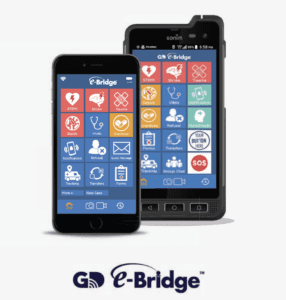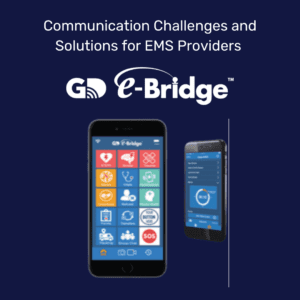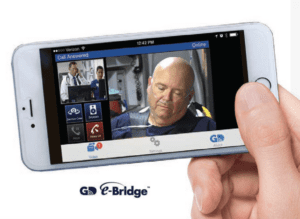Streamlined EMS Communication, Better Patient Outcomes
Depend on GD’s CAREpoint Workstation and e-Bridge Communication Platform
Rapid pre-hospital notifications and instant, secure data sharing and recording help EMS and emergency departments communicate more effectively than ever before.
These solutions enable EMS and hospitals to share vitals and treatment information in advance, virtually place physicians at the scene via live video, and provide access to online medical control. EMS can automatically alert the ED and acute care teams of patient arrival time through geo-mapping, and reduce handoff times.
How many lives can you save with faster patient handoff times, improved communication and telehealth?
From first point of medical contact through handoff to the emergency department, EMS agencies provide care that can make all the difference in patient outcomes.
In the field, clear and thorough communication between EMS and other healthcare organizations is critical to relaying detailed patient information in a timely manner so that hospital teams can put the proper personnel in place for patient arrival. No matter the scenario, EMS and hospital teams function better when they have resources to work together to improve quality of care and reduce treatment times and risk.
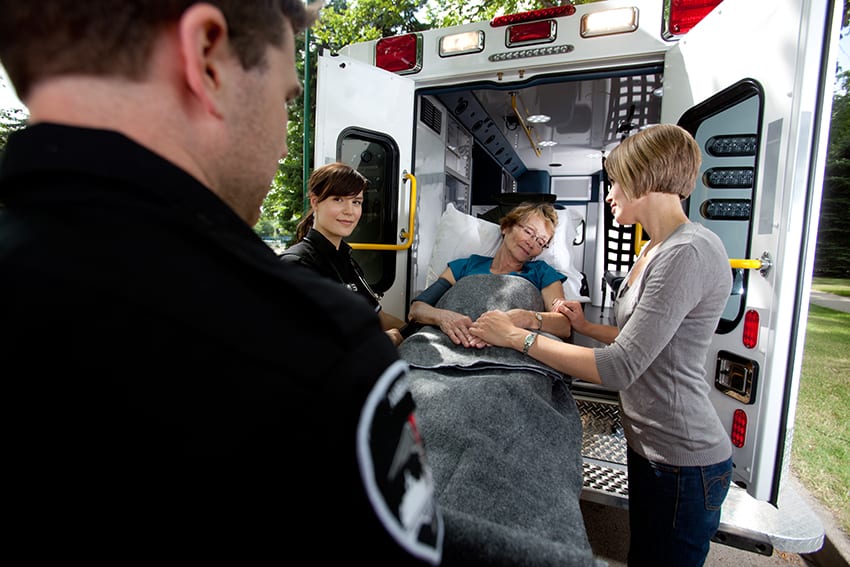
Creating a Seamless Model for Acute Care in EMS
In the EMS field, we have tended to treat each acute care scenario as its own specialized process. However, each process needs to be seamlessly integrated into the entire patient journey. GD solutions make that possible.
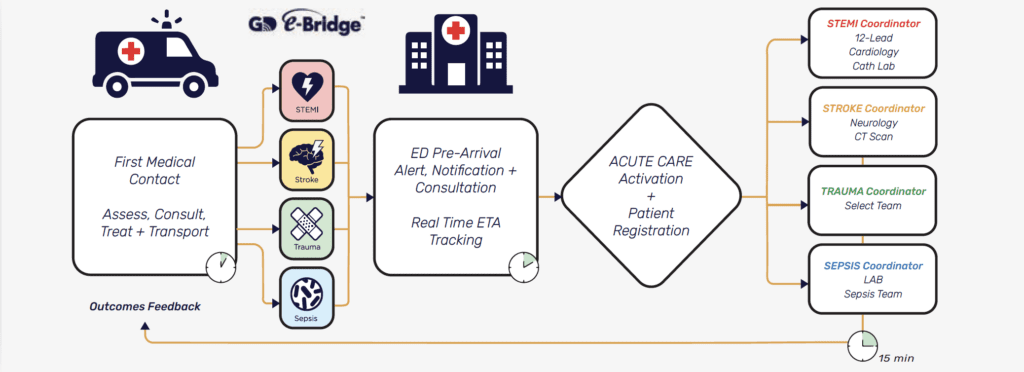
Related Innovations
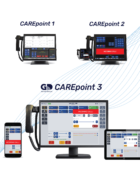
CAREpoint
CAREpoint consolidates EMS communication, including forms data, 12-leads, and calls for more seamless EMS to ED communications.
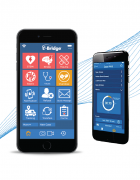
e-Bridge
Enables consistency and process improvement through enhanced information and data communications between EMS and hospital teams.
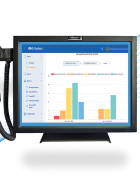
D-Scribe X
Empowers medical teams with remote and centralized access to all pre-hospital and hospital communication, data and reports.
Expertise
Proven success
ROI
- Reduces wall time
- Easier form handling
- Improved documentation and QI/QA for EMS agencies
- Increases secure patient information sharing which decreases false lab activations and lessens patient handoff times
- Outcomes Feedback
STATS
0%
0%
0Min

- Dale Lafayette (Trinity Mercy Medical Center, Springfield, MA)
See for Yourself!
Contact us to see how our solutions for EMS can help you
Recent News
Recent news, articles and information
Insights to help you do what you do better, faster, and more profitably.
